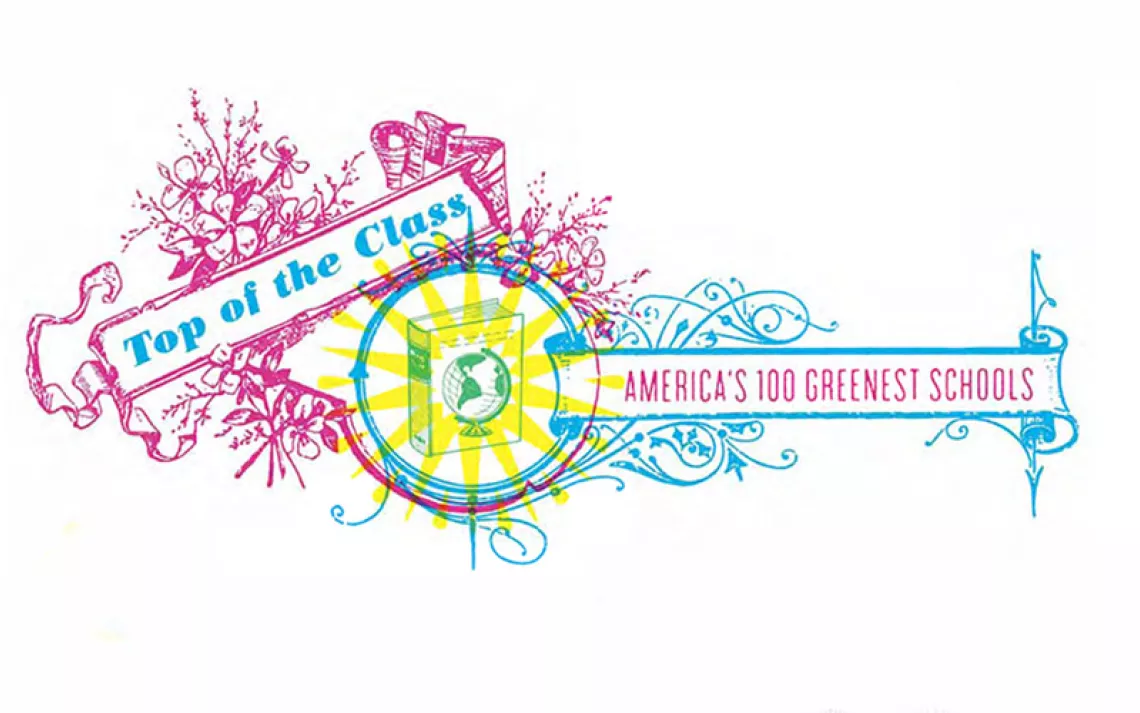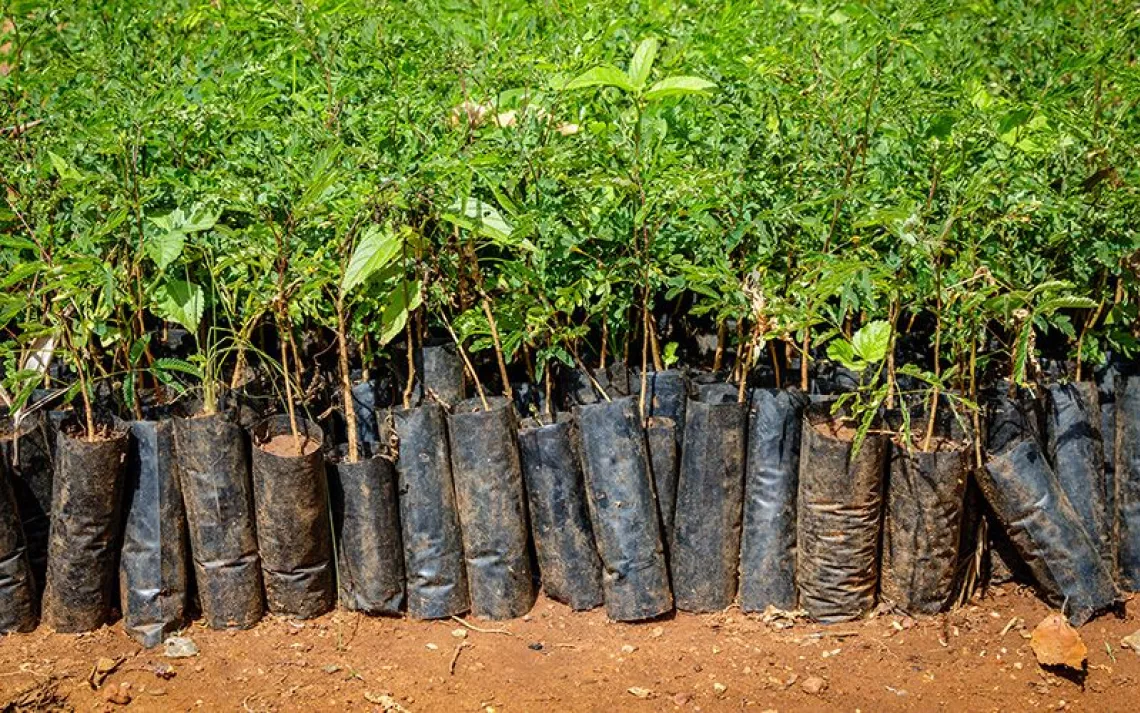The Top 20 Coolest Schools 2016
These are the colleges working hardest to protect the planet in 2016
The Complete Ranking: All 201 Schools | Scoring Key | Methodology | FAQ | More Cool Schools
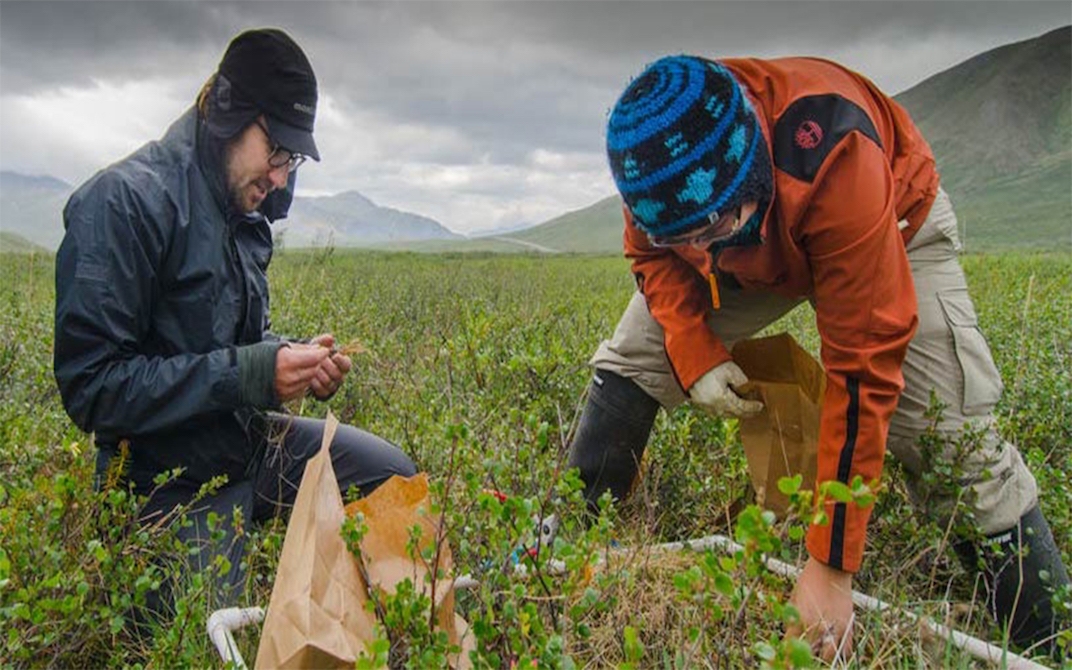
During the summer of 2015, three Colgate University students and their professor, Mike Loranty, traveled more than 500 miles through the forests, mountains, and desolate tundra of Alaska to study how vegetation influences permafrost temperature. The team collected data for a National Science Foundation–funded, trans-Arctic collaboration that will help predict which parts of the Arctic will thaw faster than others. | Photo by Sarah Hewitt for the Colgate Scene
20: COLGATE UNIVERSITY
Score: 665.14 | Hamilton, New York
Winters are chilly in upstate New York and it takes a lot of energy to heat all of the buildings at Colgate University, a liberal arts college. The school is doing what it can to lower its energy footprint by getting 80 percent of its heat from biomass generation. Students can even check an online dashboard to track the minute-by-minute energy, electricity, and water consumption of the campus’s eight residence halls and new athletic facility. The school’s spirit of stewardship also extends to the more than 1,000-acres of surrounding forests that it owns—a woodland carefully managed for fuel production, wildlife habitat, and to serve as an outdoor laboratory for some of the university’s 97 sustainability courses.
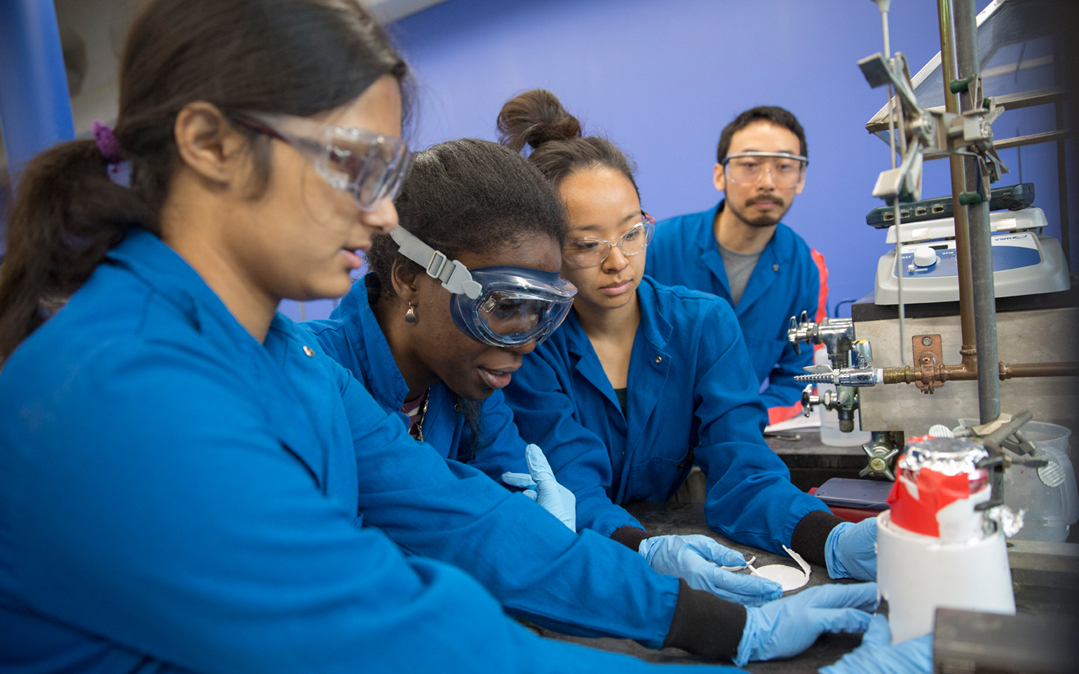
Harvard University students test the biodiesel they created using waste vegetable oil from the freshman dining hall as part of an effort to introduce campus sustainability challenges into the curriculum. | Photo Courtesy of Kris Snibbe, Harvard Public Affairs & Communications
19: HARVARD UNIVERSITY
Score: 668.86 | Cambridge, Massachusetts
Harvard has at least 100 LEED-certified buildings—more than any other university. Under their roofs, 296 faculty members research environmental issues and teach 149 classes about energy and sustainability. Dining halls spend 32 percent of their budget on local food, including the harvest from four on-campus community gardens. Since 2004, Harvard’s shuttle buses have run on biodiesel, though 99 percent of students walk or bike to class. Half the campus’s trash, and 93 percent of building and demolition waste, is diverted from landfills. Harvard has also reduced its greenhouse gas emissions 20 percent since 2006, the equivalent of sidelining 12,000 cars each year.
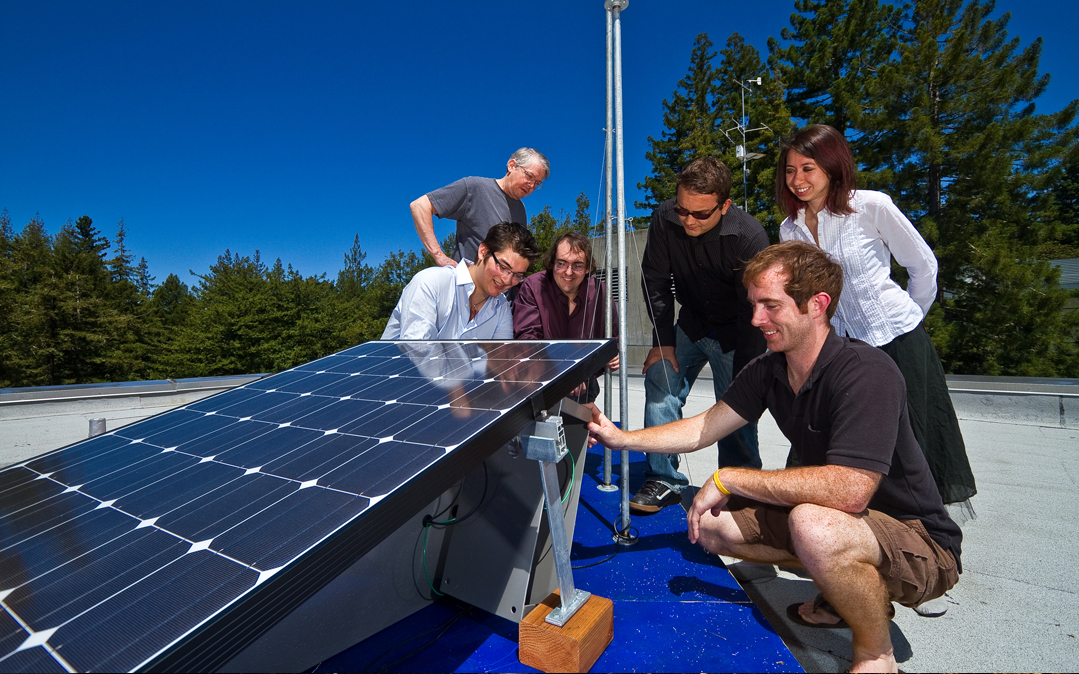
At the University of California at Santa Cruz, a cross-disciplinary group of engineering undergraduates—the Green Wharf Renewable Energy Project team—shows off its senior capstone design project, a low-impact marine microgrid energy system. | Photo Courtesy of Jim MacKenzie/UC Regents
18: UNIVERSITY OF CALIFORNIA, SANTA CRUZ
Score: 670.87 | Santa Cruz, California
Thanks in part to a group called Students for Organic Solutions, 33 percent of UCSC’s cafeteria budget goes toward organic ingredients that were produced no farther than 250 miles from Santa Cruz, including from the university’s own 30-acre farm, where students learn how to grow pesticide-free food.The Banana Slugs also run their own bicycle library, and the school reduced its water use by 36 between 2005 and 2015.The campus is full of old-growth redwood trees and wild deer, and boasts epic views of the Monterey Bay.
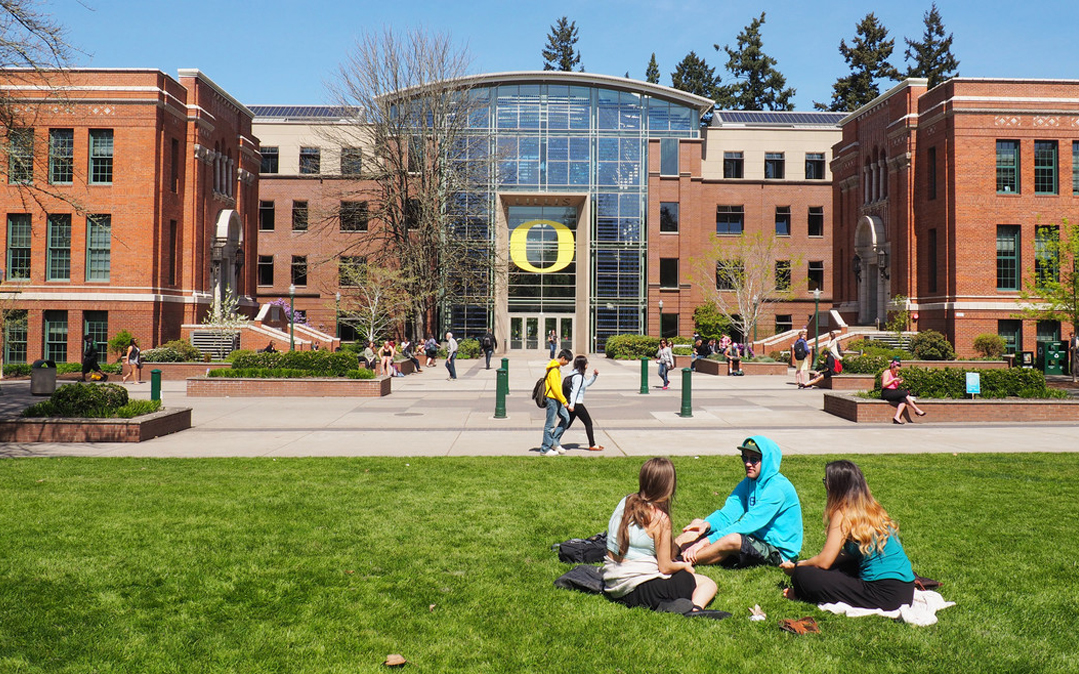
Students enjoy a sunny spring day by one of the University of Oregon's many LEED-certified buildings. | Photo Courtesy of the University of Oregon
17: UNIVERSITY OF OREGON
Score: 673.86 | Eugene, Oregon
UO’s team colors are yellow and green—and the schools is also committed to green energy, with a fifth of its electricity coming from hydropower and a growing share from wind. When getting around, more than 80 percent of students commute sustainably: 67 percent walk, while 16 percent rely on public transit. Even the powerhouse athletics department has embraced sustainability, adopting sustainable purchasing policies and making sure that it’s easy for Ducks attending sports games to recycle.
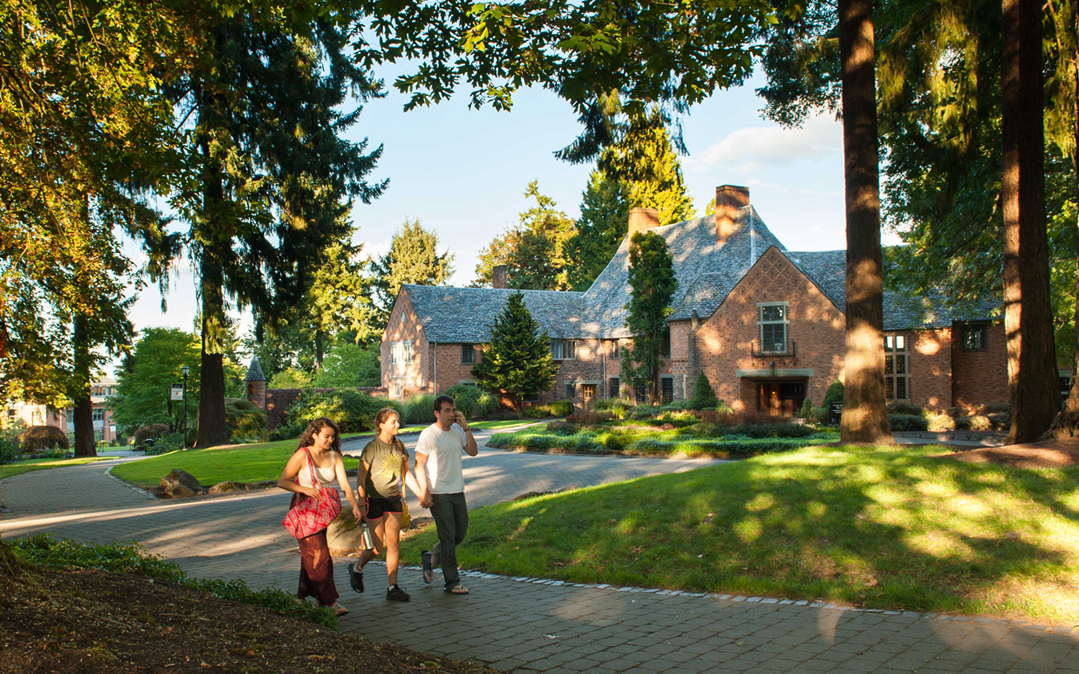
The grounds at the historic Manor House at Lewis & Clark College are managed according to organic-land-care principles as part of the campus-wide program to promote sustainable landscapes. | Photo Courtesy of Lewis & Clark College
16: LEWIS & CLARK COLLEGE
Score: 682.2 | Portland, Oregon
A perennial pioneer in the sustainability realm, Lewis & Clark makes sure that 95 percent of its new buildings are LEED-certified, that 28 percent the college’s food comes from within 250 miles, and that more than 60 percent of its waste is recycled or composted. In addition to being a major player in the field of environmental studies, Lewis & Clark’s law school offers a law degree in “Environmental, Natural Resources, and Energy Law,” while graduate students can earn a master’s-level certificate in ecopsychology.
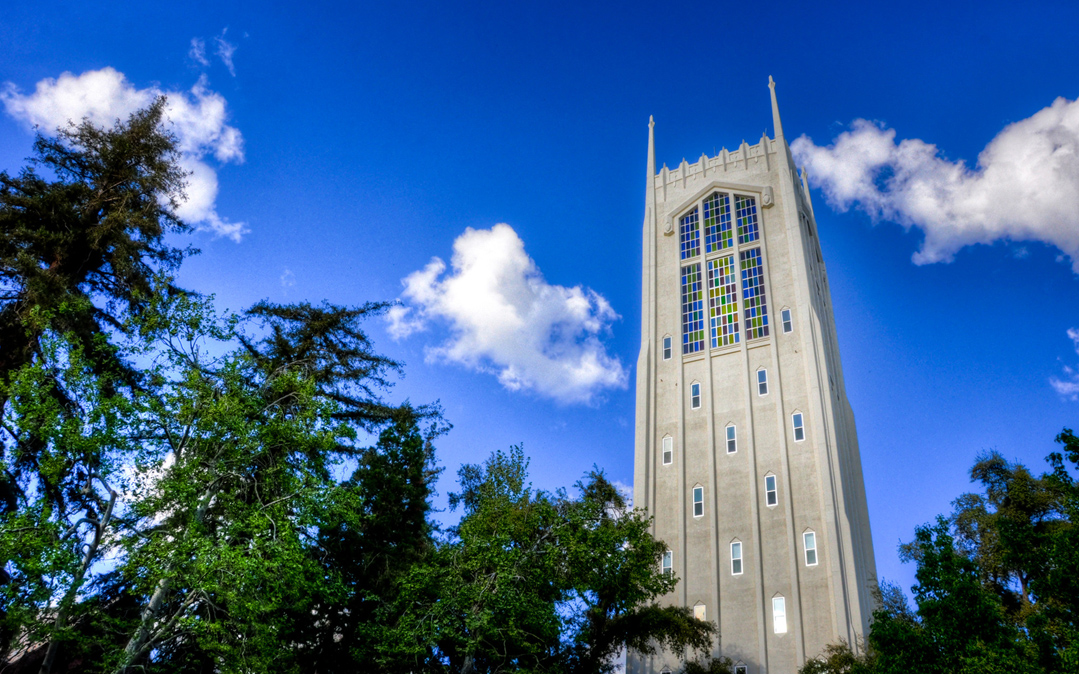
University of the Pacific, the oldest chartered university in California, is home to the largest collection of John Muir papers, journals, and sketches, and is a leader in sustainability efforts, including an annual Sustainability Month, the Ted and Chris Robb Garden, Pacific Kitchen Co-op, and the Pacific Green Team. | Photo Courtesy of University of the Pacific
15: UNIVERSITY OF THE PACIFIC
Score: 685.73 | Stockton, California
With a vehicle fleet that’s 90 percent all-electric and a water-usage rate that’s fallen 24 percent over the past four years, little UoP—California’s oldest chartered university—has taken big steps to minimize its impact. The school has also achieved a 60 percent waste-diversion rate, with help from 125 recycling bins across campus, plus a university-wide “furniture and equipment reallocation program.”
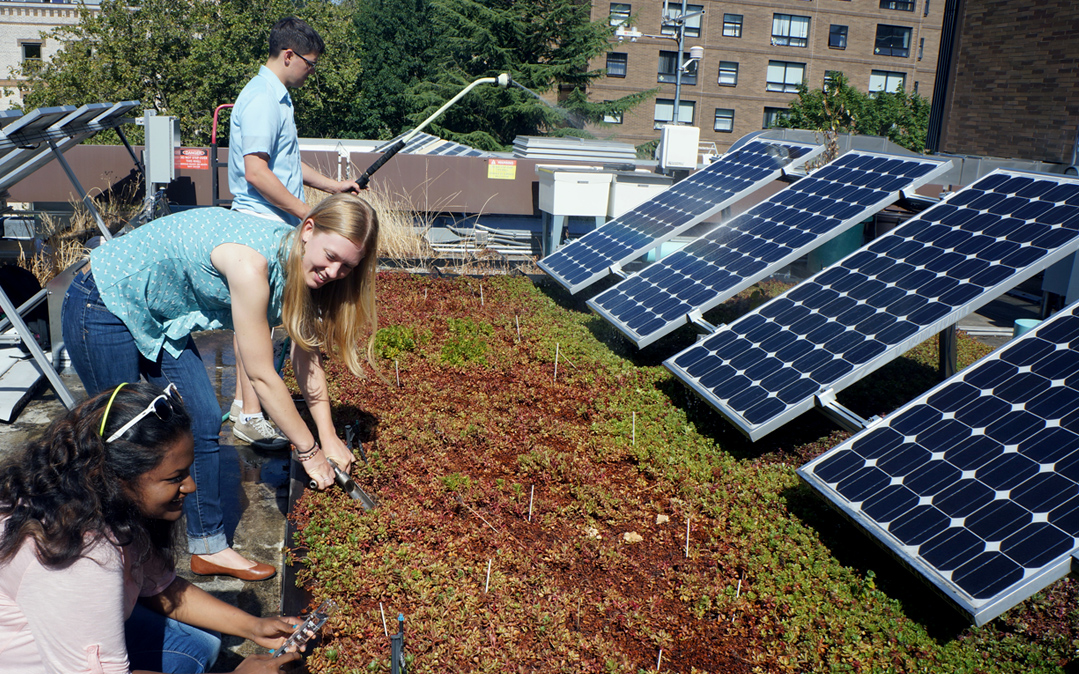
Portland State University students study the effects of combining solar panels with eco-roof technology at PSU's LEED Gold-certified Science Research and Teaching Center. | Photo Courtesy of Inez Lawson/Portland State University
14: PORTLAND STATE UNIVERSITY
Score: 690.78 | Portland, Oregon
During the past eight years, Portland State has reduced its water consumption by more than 40 percent, and the university’s eight LEED-certified buildings include a research greenhouse. The school received a salmon-safe certification for its efforts to protect the local watershed, and is a designated Bee Campus USA. More than a fifth of PSU’s food and beverage purchases come from Oregon or Washington. Used cooking oil gets recycled into biodiesel, and some dining halls provide reusable to-go containers.
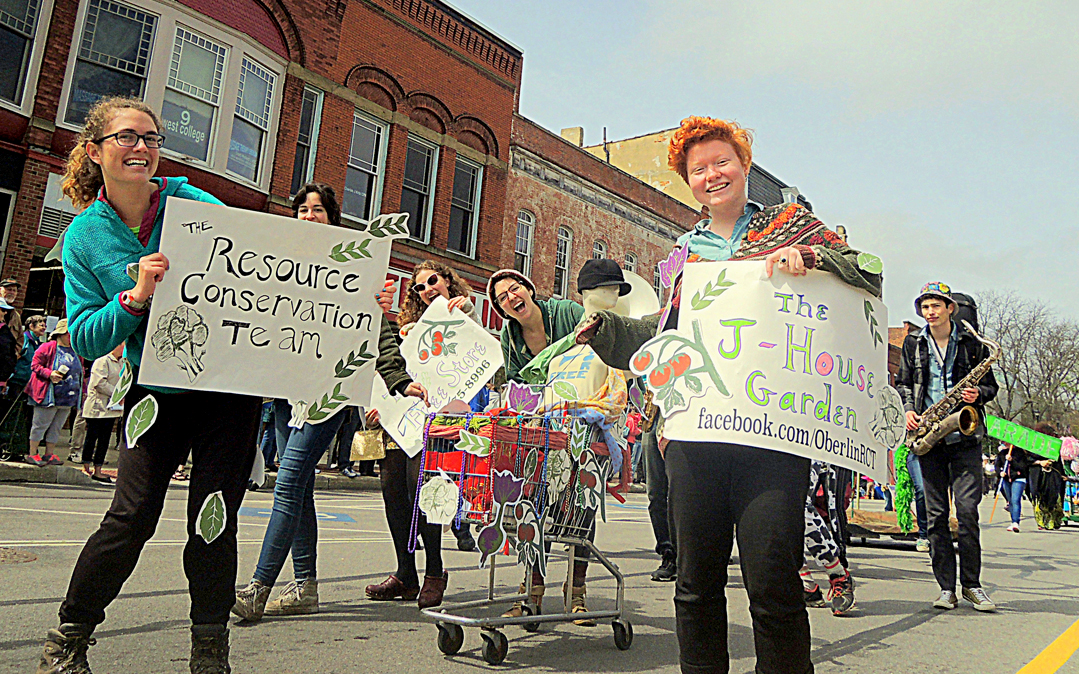
Oberlin College's Resource Conservation Team works on waste-reduction initiatives, including composting, recycling, gardening, and the Free Store. | Photo Courtesy of John Petersen
13: OBERLIN COLLEGE
Score: 695.49 | Oberlin, Ohio
It’s hard to talk eco-schools without mentioning Oberlin College, an institution that for years has aimed to extend its green reach beyond campus borders. In May, the Hotel at Oberlin became the first college-owned LEED Platinum hotel. As a whole, the school’s energy consumption has plummeted 29 percent during the past four years. And in the last eight years, Oberlin has slashed its water use by 27 percent. In 2012, Oberlin installed a 2,270-kilowatt solar array, which generates more than a 10th of the college’s energy.
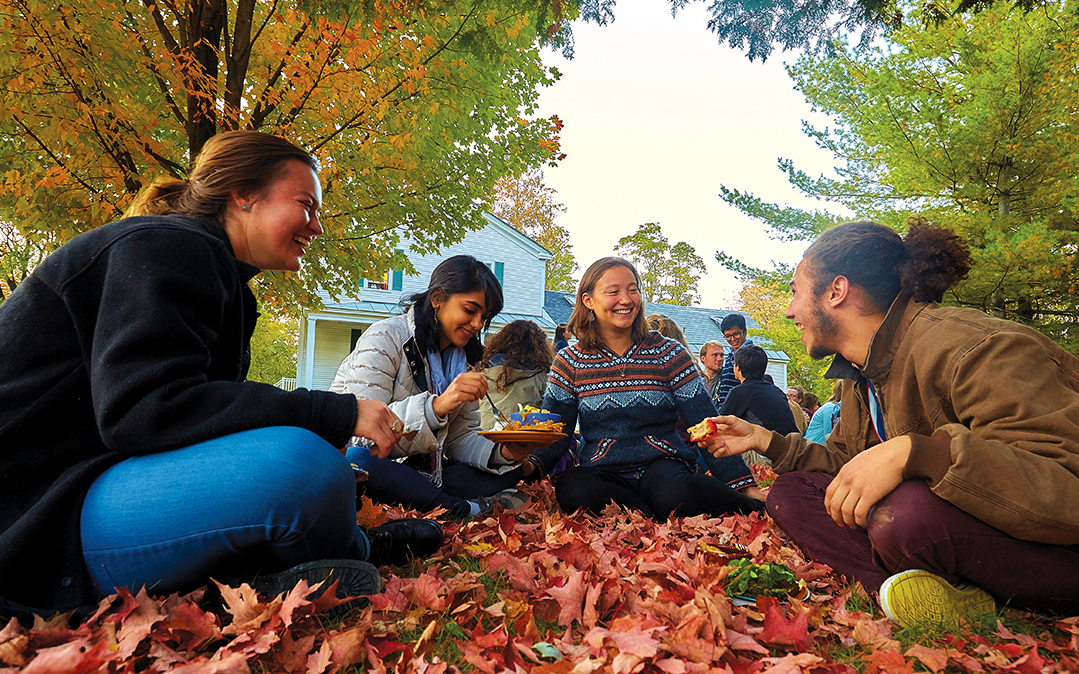
Students enjoy the annual Weybridge Fall Feast during Middlebury College's homecoming weekend in 2015. Weybridge House draws students who share an interest in sustainability and food issues. | Photo Courtesy of Yeager Anderson
12: MIDDLEBURY COLLEGE
Score: 697.77 | Middlebury, Vermont
Middlebury—home to America’s first undergraduate environmental studies program, now half a century old—expects to achieve carbon neutrality by the end of 2016, an emissions reduction made possible by an on-campus biomass gasification facility. In the dining halls, more than 30 percent of ingredients are grown or produced within a 250-mile radius of campus; some ingredients come from the the school’s own organic, student-run farm. Middlebury also has extensive stormwater management solutions in place to protect nearby Lake Champlain.
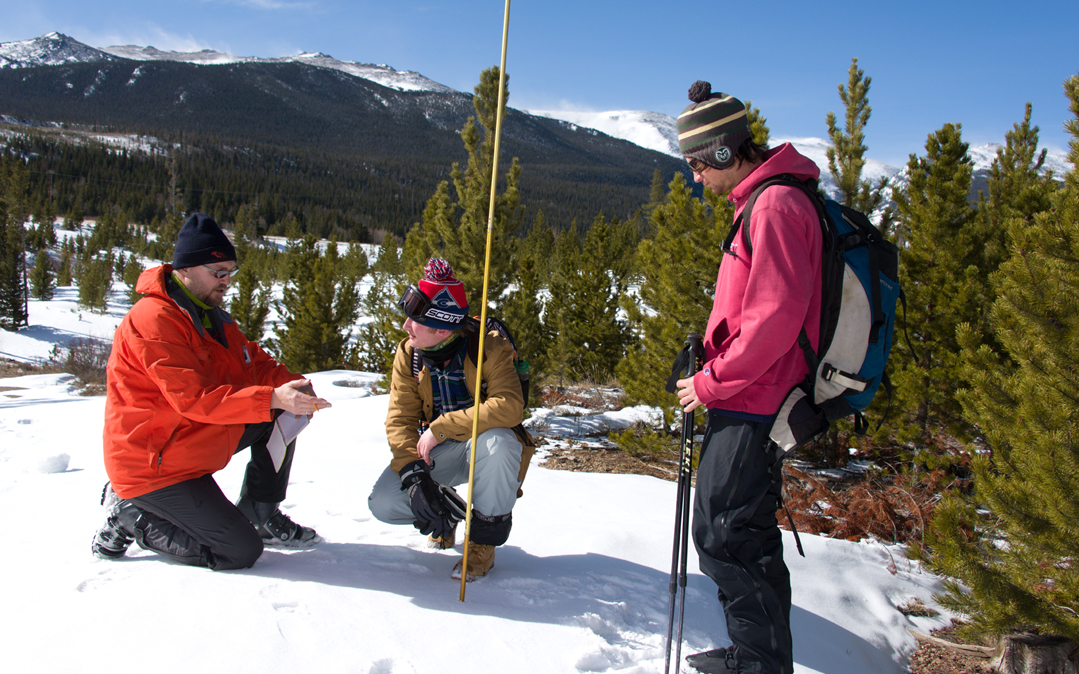
Colorado State University faculty and students conduct field research to measure snowpack at the CSU Mountain Campus. | Photo Courtesy of Creative Services, Colorado State University
11: COLORADO STATE UNIVERSITY
Score: 699.54 | Fort Collins, Colorado
More than a fifth of CSU’s 2,368 undergraduate classes include a sustainability component, thanks, in part, to the university’s School of Global Environmental Sustainability, which “encompasses all research and education that deals with the complex environmental, economic, and societal issues of sustainability.” The Rams have figured out how to divert 83 percent of campus trash as well as 79 percent of waste caused during construction and demolition. Colorado State’s 5.3-megawatt solar plant spans 30 acres.
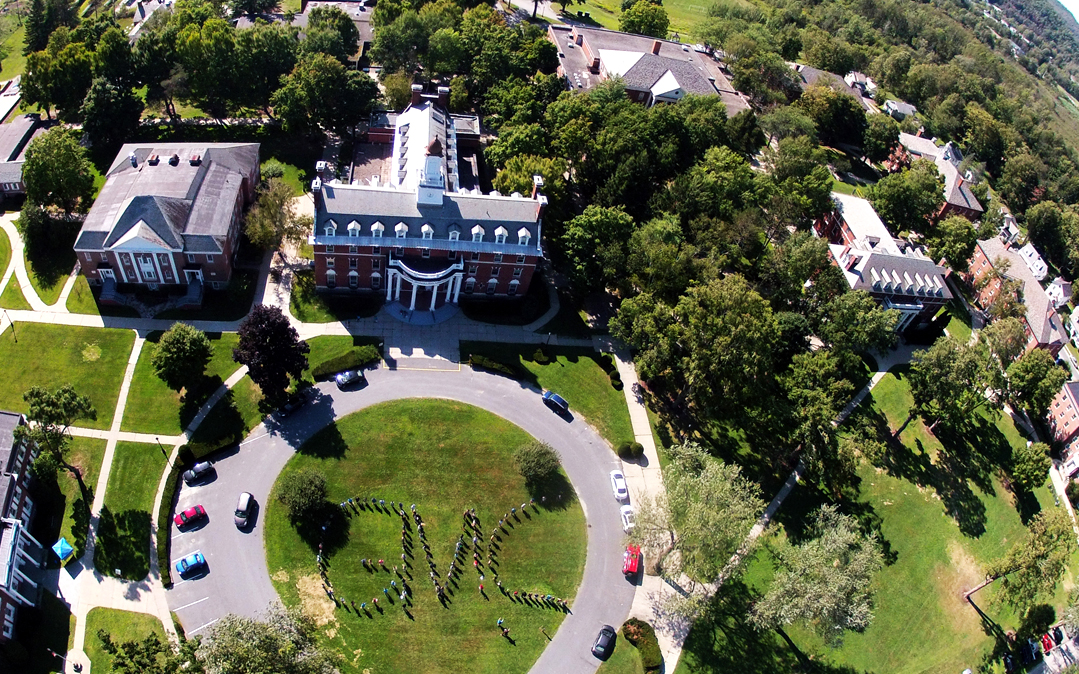
Green Mountain College students partnered with trustees and the administration to divest fossil fuel securities from the college's endowment. | Photo Courtesy of Eric Hudiburg/Green Mountain College
10: GREEN MOUNTAIN COLLEGE
Score: 702.99 | Poultney, Vermont
Those who want to learn about technology in depth go to MIT or Caltech. Those who want a deep understanding of the environment go to GMC. Of this small school’s 327 undergraduate classes, 113 contain sustainability content, and 51 are exclusively about sustainability. “Regardless of major,” the college’s website promises, “you learn how social and ecological sustainability is both relevant and meaningful.” Sixty percent of the undergraduate faculty is engaged in sustainability research, administrators have gotten fossil fuel funds out of the endowment, and the campus has been carbon-neutral since 2011. Next up on GMC’s eco-checklist: to rely only on renewable energy by 2020.
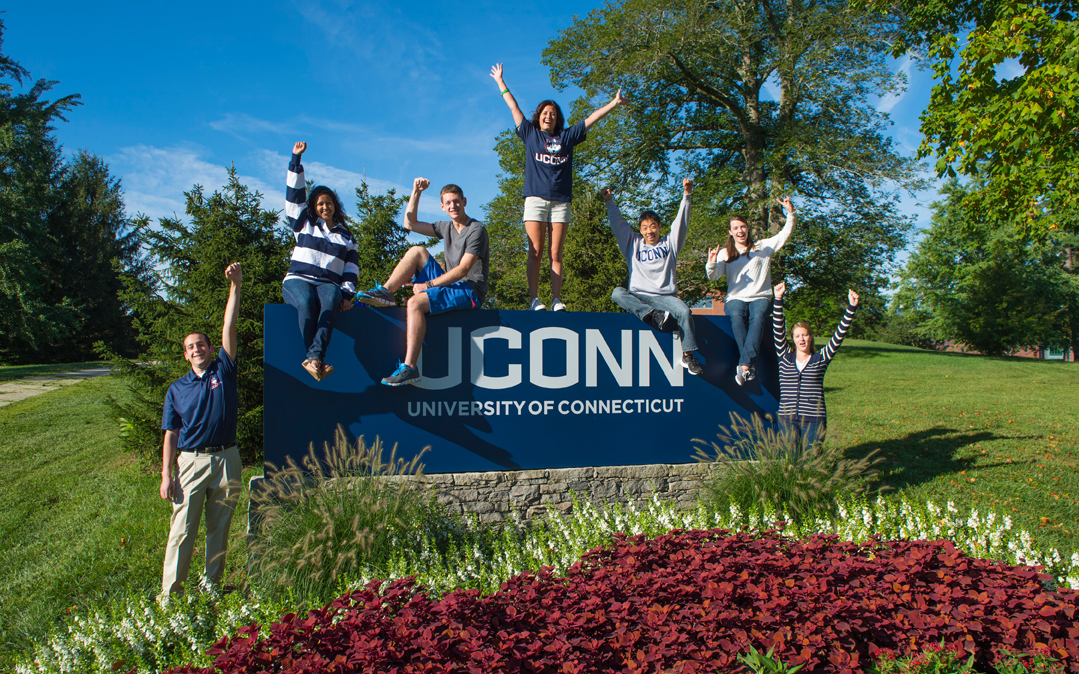
University of Connecticut students—a.k.a. Huskies—can choose from a slew of classes on environmental issues. | Photo Courtesy of Peter Morenus/University of Connecticut
9: UNIVERSITY OF CONNECTICUT
Score: 703.02 | Storrs, Connecticut
Huskies have access to hundreds of classes about environmental issues, making for one of the nation’s most eco-literate student bodies. Students win EPA grants for their research, tend to an organic farm, and insist on locally sourced ingredients in dining halls, right down to the honey, which comes from an on-campus apiary. During new construction, building crews divert 97 percent of waste away from landfills. Over the past decade, UConn has cut its water use by more than a fifth.
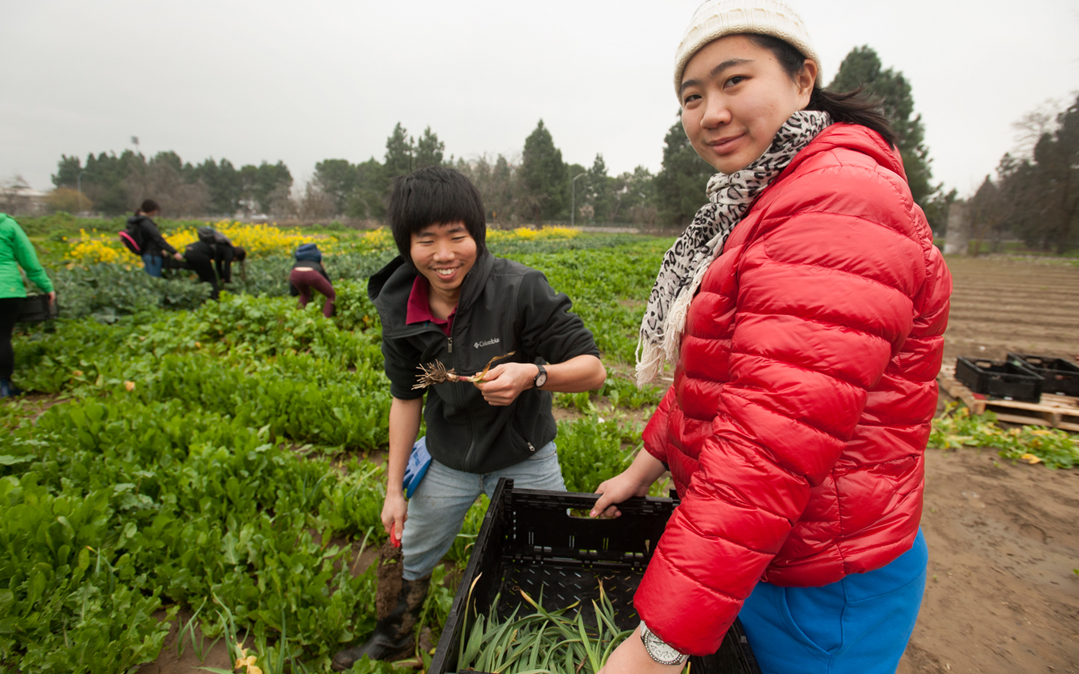
Paul Kasemsap (horticulture and agronomy major) and Yufei Qian (environmental horticulture) harvest garlic at the University of California at Davis. Surplus vegetables from the Plant Sciences 5 course go to the Yolo County Food Bank. | Photo courtesty of Gregory Urquiaga/UC Davis
8: UNIVERSITY OF CALIFORNIA, DAVIS
Score: 714.5 | Davis, California
UC Davis is a mainstay on Sierra’s top 10 list thanks in part to how its students live: 83 percent of Aggies commute to class sustainably (61 percent walk or bike; 22 percent use public transit). Many are involved in green groups, including one called Wild Campus, which protects nearby wildlife. Another, called Student Farm, grows organic produce for campus dining halls and a local CSA. During construction-related demolition, Davis diverts 96 percent of the resulting waste, and the school’s 62-acre solar array generates 14 percent of the campus’s electricity. Davis is a noted water leader, too: In 2015, the school reduced its irrigation needs by 30 percent and developed ways to conserve an additional 61 million gallons per year.
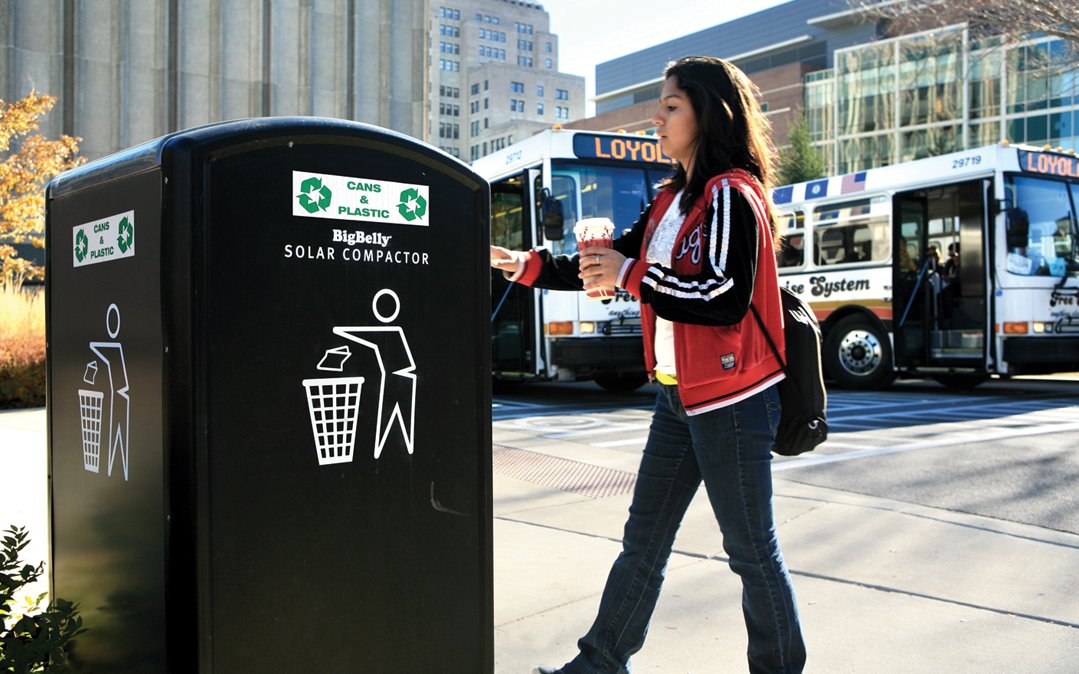
Loyola University's main campus diverted over 50 percent of its waste for the first time in 2015-16, and its award-winning biodiesel program fuels campus shuttles. | Photo courtesy of Loyola University Chicago
7: LOYOLA UNIVERSITY CHICAGO
Score: 716.14 | Chicago, Illinois
At Loyola, a private Catholic school, dorms are equipped with low-flow showerheads, dual-flush toilets, and energy-efficient lights. In the cafeterias, trayless dining reduces food waste by at least 25 percent, napkins are made from recycled paper, old fryer oil becomes biodiesel, meat is organic, and about a third of the food budget is reserved for locally sourced ingredients. The school has lowered its buildings’ energy consumption by more than 3 percent per year, and Loyola’s Institute of Environmental Sustainability lets students choose any of six eco-majors.
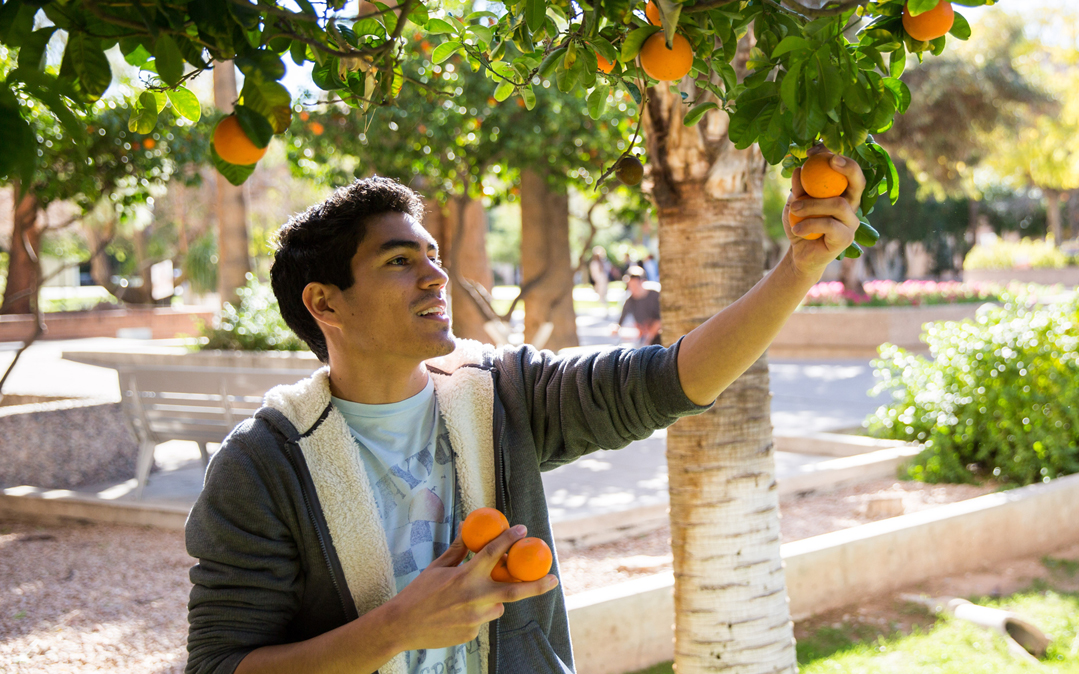
Senior sustainability major Brandon Ruiz picks oranges on Cady Mall at Arizona State. The orange harvest has been organized for the last eight years by the ASU Arboretum and ASU Cares. | Photo Courtesy of Deanna Dent/ASU Now, Copyright Arizona Board of Regents
6: ARIZONA STATE UNIVERSITY
Score: 716.83 | Tempe, Arizona
ASU’s School of Sustainability, founded a decade ago, was the first of its kind in the United States. So far, it has granted 982 bachelor’s, master’s, and doctorate degrees, all in sustainability-related subjects. On top of that, many of the Sun Devils’ cocurricular activities are environment-themed: The student-led Ditch the Dumpster initiative, for example, moves the campus toward its zero-waste goal by making sure that items are donated, recycled, or composted during dorm move-out events.
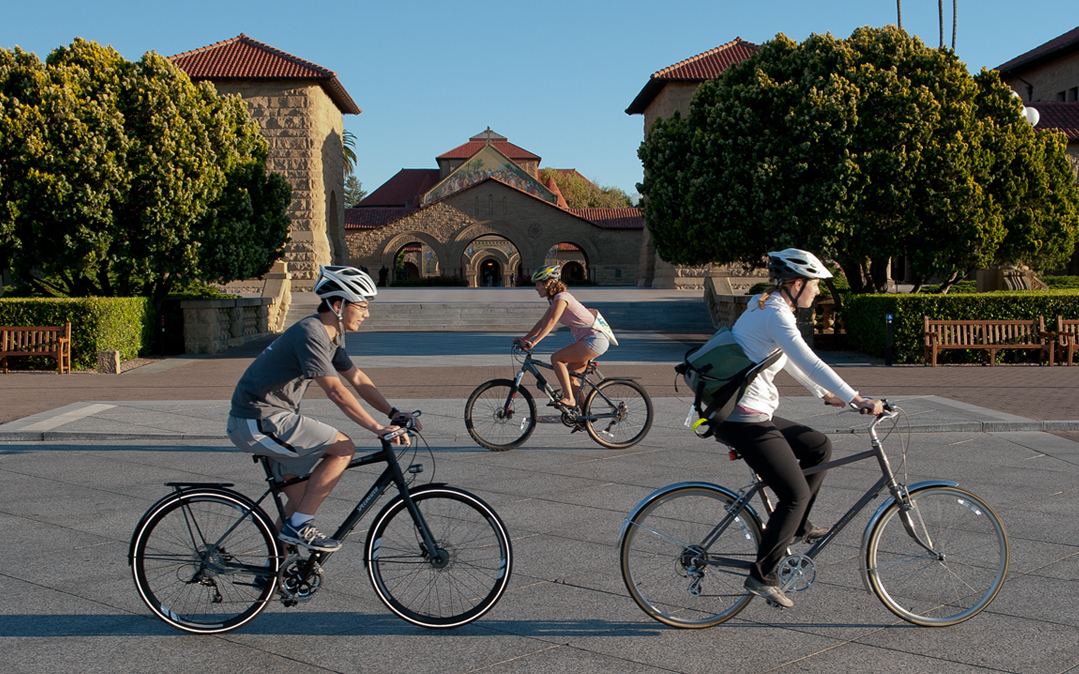
As one of the nation's first platinum-level Bicycle Friendly Universities, Stanford University has a bicycle program that accommodates an estimated 13,000 bikes on campus each day. | Photo Courtesy of Office of Sustainability, Stanford University
5: STANFORD UNIVERSITY
Score: 718.87 | Stanford, California
Its sports teams may be Cardinal, but Stanford is thoroughly green. Thirteen percent of the university’s 2,113 classes are about, or at least touch on, environmental issues, and 65 percent of students graduate from programs designed to instill eco-literacy. Empowered by initiatives like bike sharing, 87 percent of the student body gets to class via nonmotorized means—they pedal, mostly, but also walk and skateboard. Forty percent of Stanford’s car fleet is fully electric and, in 2014, the school divested its $22 billion endowment from coal-mining operations.
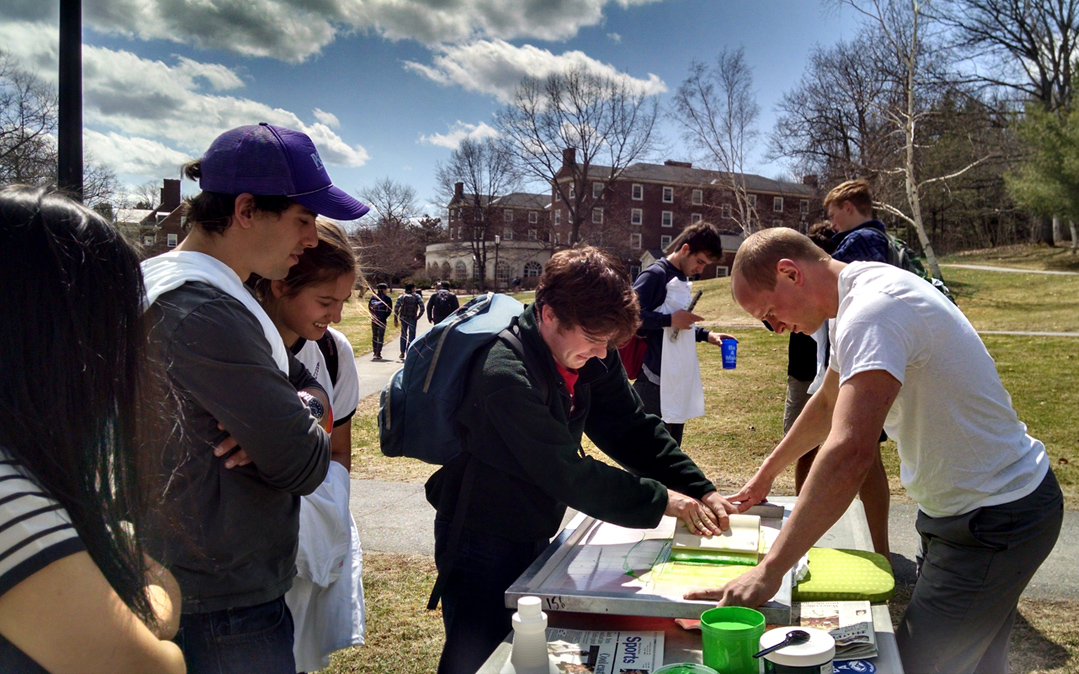
During Earth Week at Colby College, students learn how to screen print T-shirts. The design was created by a student. | Photo Courtesy of Colby College
4: COLBY COLLEGE
Score: 722.08 | Waterville, Maine
Colby, a small liberal arts school in Maine’s Kennebec Valley, knows how to wield its purchasing power. The school buys paper that’s FSC-certified and 100 percent recycled, and cleaning products that are eco-safe. Of the 705 classes offered on the 714-acre campus, 106 relate to sustainability. The available extracurriculars are extraordinarily green, too, including student groups like the Colby Alliance for Renewable Energy (CARE), dedicated to minimizing the campus’s use of coal and oil, and the Colby Organic Farmers and Gardeners Association, which grows fruits and vegetables for the cafeterias. Colby declared carbon neutrality in 2013, thanks to its reliance on clean power, its 14 LEED-certified buildings (more than any other Maine school), and its commitment to purchasing carbon offsets.
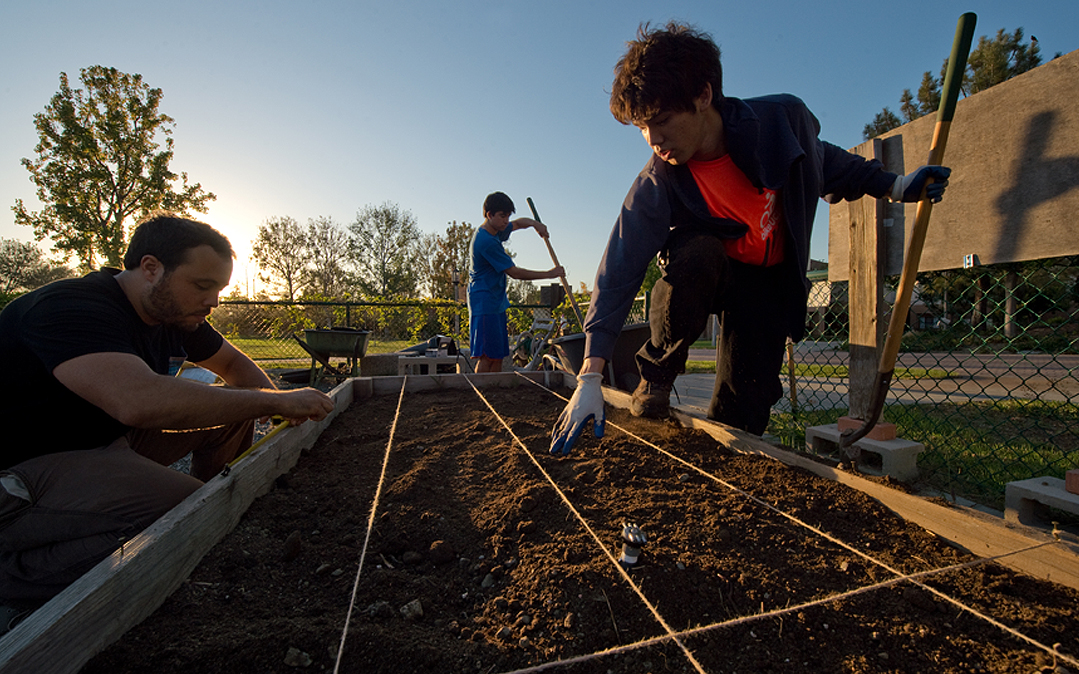
Fernando Maldonado (left), the program manager in the University of California at Irvine's Global Sustainability Resource Center, works with undergraduate students Benjamin Esquivel and Nicholas Scott Leflohic (right). | Photo Courtesy of Steve Zylius/University of California, Irvine
3: UNIVERSITY OF CALIFORNIA, IRVINE
Score: 734.38 | Irvine, California
Last year’s number one school remains an eco-leader, excelling in a category that’s tough to conquer in car-crazy Southern California: transportation. UCI provides a wide range of ways for Anteaters to keep their commuting footprint negligible—bicycling resources, mass transit, the option for many to telecommute, and bike and car sharing. More than a third of the school’s vehicles are all-electric, and another third are plug-in hybrids. The campus consumes 24 percent less energy than it did in 2008, and any new construction conforms, at minimum, to LEED Gold standards.
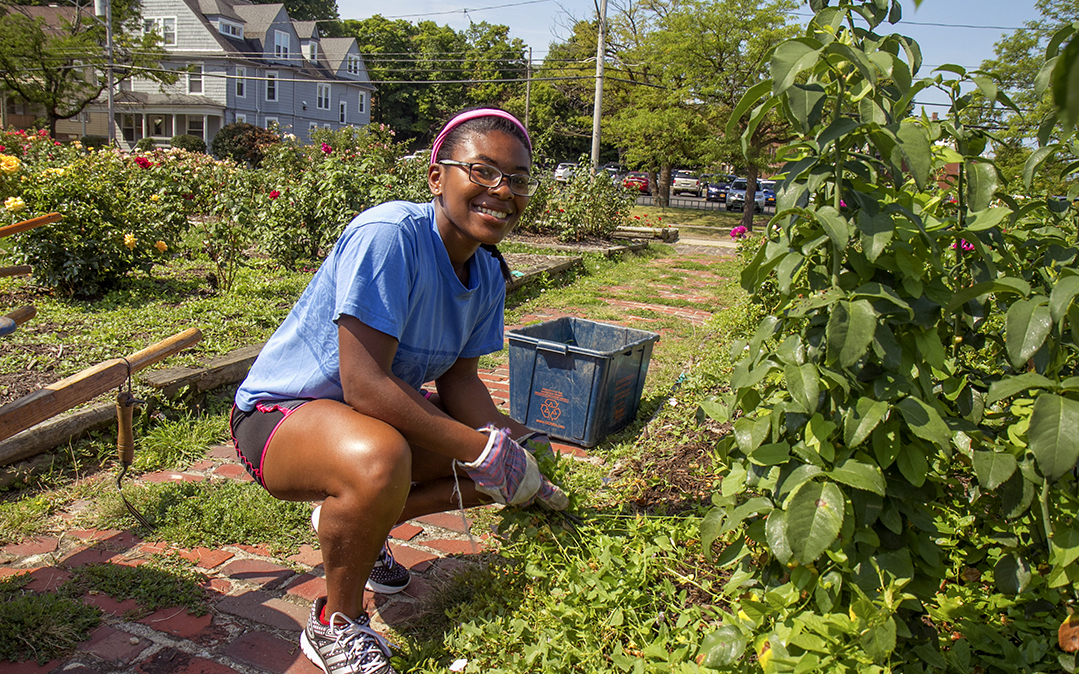
During orientation, first-year students in the College of Environmental Science and Forestry at the State University of New York (SUNY) participate in the Campus Day of Service, volunteering on an array of projects, including improving city parks. | PhotocCourtesy of Wendy P. Osborne/SUNY College of Environmental Science and Forestry
2: STATE UNIVERSITY OF NEW YORK COLLEGE OF ENVIRONMENTAL SCIENCE AND FORESTRY
Score: 735.23 | Syracuse, New York
It’s surprising that SUNY-ESF hasn’t breached Sierra’s top 10 before now, considering its name. This upstate school leapt 102 spots from its place in last year’s ranking, improving markedly in the categories of water, innovation, and planning. Many students are engaged in campus greening efforts, and 25 percent of classes are sustainability-related, netting SUNY a high academics score, too. Clinching its rise, the school announced last December that it would no longer include fossil fuel companies in its endowment portfolio.
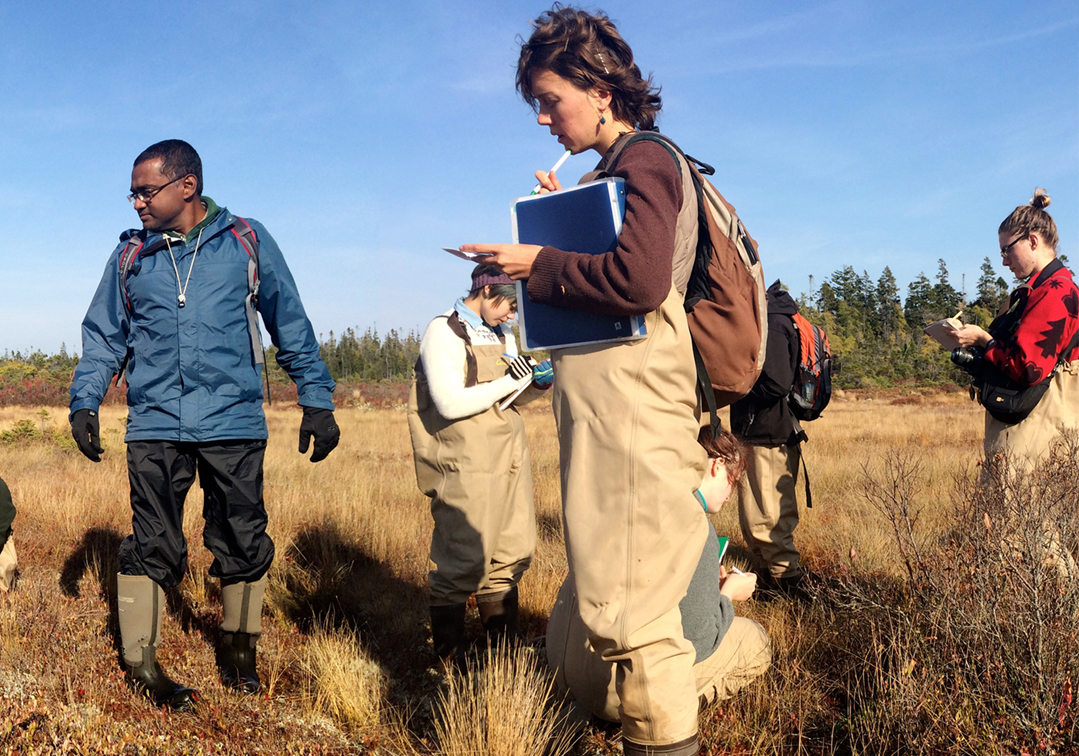
College of the Atlantic students and faculty identify flora while exploring a bog in Acadia National Park, for the botany course Trees and Shrubs of Mount Desert Island. | Photo Courtesy of College of the Atlantic
1: COLLEGE OF THE ATLANTIC
Score: 783.41 | Bar Harbor, Maine
Maine’s College of the Atlantic is the country’s greenest university by a landslide—up 15 spots from last year and beating this year’s number two school by almost 50 points. At least 75 percent of COA’s faculty is engaged in sustainability research. More than 35 percent of the classes offered are related to environmentalism. And a full 100 percent of the campus’ electricity comes from renewable sources (93 percent from wind, 7 percent from solar). In 2013, the university divested its endowment from all fossil fuels.
Chris Stanley contributed reporting.
 The Magazine of The Sierra Club
The Magazine of The Sierra Club
